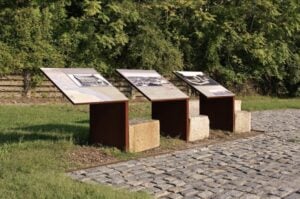There are many who deserve credit for helping to create and grow the James River Park System. People like Newton Ancarrow, who became a vocal advocate for a cleaner river. The legendary Ralph White, who worked tirelessly to build much of the Park that we know today. And Wilfred Emory Cutshaw…
Wait. Who?

Anyone who knows anything knows that much of Richmond’s identity – for good or ill – is tied to the Civil War. At the end of the War, in 1865, much of Richmond was in ruins. There was a great need to rebuild this once-great city, and bring its bustling businesses and culture back to life.
Enter Wilfred Cutshaw.
Cutshaw was a graduate of the Virginia Military Institute, with degrees in civil and military engineering. Born in Harper’s Ferry (in what was then still Virginia), he left his civilian life to accept a commission as an officer in the new Confederate Army in April of 1861. Just days before Robert E. Lee’s surrender at Appomattox, Cutshaw was wounded, and had a leg amputated to save his life.
When Richmond began the search for a new city engineer in 1873, none other than Lee stepped forward to recommend his seasoned Lieutenant Colonel Cutshaw for the job.
For over three decades, Cutshaw restored and developed Richmond’s infrastructure. Unlike most of his era, however, he saw his charge as more than simply streets and sewers. After touring much of America and Europe, he saw the need to incorporate public spaces with public uses. He saw infrastructure as evidence of civic pride, and thought that we should revel in and enjoy the abundance that nature provided.
Cutshaw oversaw the construction of Monroe Park in what is now Virginia Commonwealth University. He secured over 50,000 trees for planting throughout the city. He developed the Byrd Park Reservoir, making it the primary public water source for all of Richmond.
Cutshaw needed a source for the Byrd Park Reservoir, and he could do no better than the nearby James River. But to get that water from the River up the hill to the Park…

In 1882 he supervised the construction of the Richmond Pump House. Built with local granite, this Victorian Gothic shrine to industry and nature was erected along the Kanawha Canal, a waterway surveyed and planned by none other than George Washington. And to make certain that Richmonders appreciated the impressive machinery and regal gift of the James, he created an open-air dance hall upon its upper floor. For decades, this was the spot to be seen in Richmond, and promoted our city’s parks and recreation before we had a Richmond Parks & Recreation.
While the Pump House was closed in 1924, and slated for demolition in the 1950s. it has survived. It’s a shell of what it once was, and what it represented for Richmond. But, still it stands. We value the James for its recreational value, and for the connection it provides between people and nature. No better example exists than the Pump House.
A long-time movement has worked to protect the Pump House, and perhaps, one day, restore it to its glory. In the mean time, make it a part of your visit to the James River Park.



